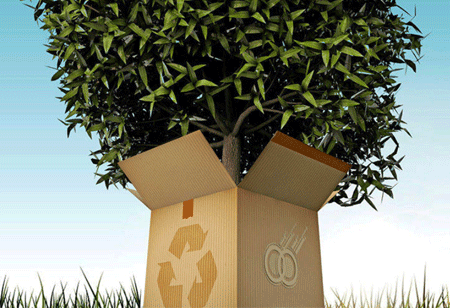
What does sustainability even mean? United Nations committee defined it as “development that meets the needs of the present without compromising the ability of future generations to meet their own needs.” If too many of us use resources inefficiently or generate waste too quickly for the environment to absorb and process, future generations won’t be able to meet their needs.
Packaging waste poses a serious threat to the environment. Over 70% of packaging that gets disposed is single use disposed on average in less than 15 minutes of use. This packaging then either stays on the planet forever in landfills, broken micro particles, carbon gas emissions or in the bellies of animals and fishes. The wide-scale use of single-use packaging is not only polluting the rivers, oceans, and soil, but it is harming the human lives as well. Hence, not long ago sustainable packaging became one of the many ways to protect the environment. Needless to say, the aim of sustainable packaging is clear – to reduce the carbon footprint.
Plus, sustainable packaging is not just about recycling but it focuses on all phases from packaging, distribution to logistics. While sustainable packaging involves increased use of life cycle inventory (LCI) and life cycle assessment (LCA) to reduce the environmental impact and ecological footprint, there has also been a rise in myths engulfing sustainable packaging.
Here we bust some of these myths:
1) Sustainability is all about recycling!
In fact, we only ‘down cycle’ and it may not help us at all in some cases as we’re still dealing with limited and sometimes diminishing resources. In many cases, recycling may work as a temporary band-aid, but the proper solution is something else. As a matter of fact, recycling actually takes up more energy and resources from the environment than it saves. The best is to reuse, re-purpose or repair. Pass on those unwanted clothes, use old packaging for storage.
2) Biodegradable and Compostable are synonymous!
Biodegradable and compostable are two words which are often used interchangeably but there is a vast difference between these two terms. While biodegradable items refer to just any material which breaks down and decomposes in the environment, compostable goods are specifically organic matter which breaks down, the end product having many beneficial uses which include fertilizing and improving soil health. Most importantly compostable items don’t leave toxic residue behind because it’s already organic. Unlike compostable, certain biodegradable products can take several years to break down and in some cases even leave toxic waste behind.
3) All compostable materials will turn to manure when disposed off!
You buy compostable cutlery and feel good that it is going to turn into manure. Truth be told, it is not necessary. If you read the fine print, it might be written that this product is industrially compostable. What does that means? It refers to the ability of that packaging to biodegrade and decompose only in a commercial composting facility. Industrial composting facilities treat the packaging at high temperatures (above 55 degrees, much higher than can be achieved at home) to accelerate degradation of the material. Unfortunately in India we dont have these sites.
sustainable packaging is not just about recycling but it focuses on all phases from packaging, distribution to logistics. While sustainable packaging involves increased use of life cycle inventory (LCI) and life cycle assessment (LCA) to reduce the environmental impact and ecological footprint, there has also been a rise in myths engulfing sustainable packaging
Sustainable is a low bar, it still needs to be achieved but it will not be enough. Packaging should not be just sustainable but also regenerative as everything in nature is.All that we produce for packaging needs to have a clear end of life. It needs to be nutritious food for another organism. It needs to break down and become earth again. We cannot possibly keep generating more harm through trying to collect, transport, ‘down cycle’ and re-transport to finally reach a stage where we cannot down cycle any more.
5) Land Dumps and Landfills are the same
Landfills are strategically located away from environmentally sensitive areas and are well-engineered with facilities for the disposal of solid waste. Designed to protect the environment from contaminants, landfills are placed using on-site environmental monitoring systems. Plus, to minimize the negative impact on the environment, efforts are made to control emissions of unpleasant or toxic substances. On the other hand, land dumps are just an excavated piece of land, a large open hole where waste material is dumped. It is not regulated and these sites are a source of harmful emissions. In India, we mostly have land dumps which doesn’t help.
6) Sustainable options are expensive
A notion that clouds sustainable packaging is that it is not cost-effective. It’s only true in the short term in certain circumstances but certainly not in the long term. As compared to the cost that the environment is incurring due to single-use plastics, sustainable options are not even a fraction. Moreover, the buyers are now purchasing products with sustainable packaging, even if they cost a bit more than a product with less conscious packaging. This can be given a further push for the benefit of a large number of people.
7) Corporate Green washing
Some companies just by adopting eco-friendly packaging are saying that they are green but we need to look at the overall picture, their manufacturing process, supply chain - the entire value chain needs to be assessed. Our processes need to also ideally be regenerative or at the least be neutral.
In a nutshell, sustainability may mean different things to different companies. For one, it may mean avoiding greenhouse gases, for another it may mean reducing food waste. However, the ultimate goal is to understand the true environmental impact of all packaging. A complete life-cycle analysis of its environmental costs needs to be done.
We use cookies to ensure you get the best experience on our website. Read more...